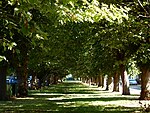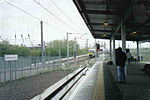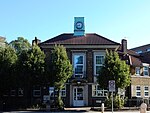RAF West Drayton
1924 establishments in the United KingdomFormer buildings and structures in the London Borough of HillingdonMilitary history of MiddlesexRoyal Air Force stations in LondonTransport in the London Borough of Hillingdon ... and 1 more
Use British English from May 2013
RAF West Drayton was a non-flying Royal Air Force station in West Drayton, within the London Borough of Hillingdon, which served as the main centre for military air traffic control in the United Kingdom. It was co-located with the civilian London Air Traffic Control Centre to provide a vital link between civil and military flying and airspace requirements. Following the departure of the remaining civil and military air traffic control systems by 2008, the site was closed and demolished for a new residential development.
Excerpt from the Wikipedia article RAF West Drayton (License: CC BY-SA 3.0, Authors).RAF West Drayton
Winter Green Drive, London West Drayton (London Borough of Hillingdon)
Geographical coordinates (GPS) Address Nearby Places Show on map
Geographical coordinates (GPS)
| Latitude | Longitude |
|---|---|
| N 51.5049 ° | E -0.4615 ° |
Address
Winter Green Drive 1
UB7 9FQ London, West Drayton (London Borough of Hillingdon, Drayton Garden Village)
England, United Kingdom
Open on Google Maps







